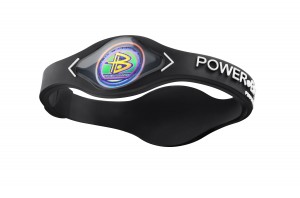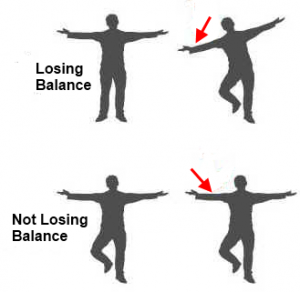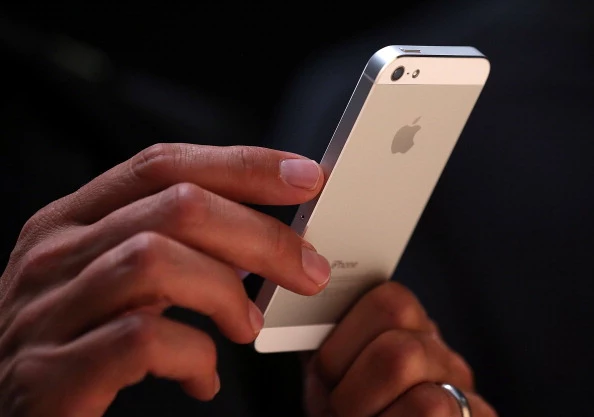According to Anoop T. Balachandran, who is a certified professional trainer with a Master’s in Exercise Physiology and Human Performance, Power Balance bracelets do not work. For those of you who are not familiar with Power Balance Bracelets, they are said to be balance improving, performance technology sports wristbands. The bracelet, which is manufactured in China, is made of rubber and holograms. So how can it improve ones balance?

According to the Power Balance company website, “the holograms in the bracelet are designed based on Eastern philosophies, which contain ideas related to energy. These are commonly referenced as Chi or Chakras.” Supposedly, the band interacts with your body frequency” and is able to improve ones balance. So the questions remains does it work?
The website, powerbalance.com, “makes no claims” as to weather or not the bracelet works, they “let the consumer decide … we offer a 30-day no-questions-asked, money back guarantee”.

LA Laker, Kobe Bryant, wears bracelet on right wrist during NBA basketball game
There are multiple reasons why one may consider joining the trend and purchasing a bracelet, such as the money back guarantee, the affordable price ($29.99) and the many celebrities who promote the product. According to the www.powerbalance.com professional athletes such as Drew Brees, Clay Mathews, Darren Sproles, Rudy Gay, Matt Kemp, Mardy Fish, Stacy Lewis, Kobe Bryant and Keegan Bradley, all wear the bracelets. Even actors and musicians have started following the trend.

Zac Efron (actor) wearing bracket on right wrist
Considering the fact that the website warns customers that the bracelets do not always work for everyone, then why do some people beg to differ?
Anoop T. Balachandran explains three main reasons why people are often fooled into believing that the bands can and do improve balance:
- The Placebo Effect
- A flexibility test
- A strength test
According to Balanchandram, there have been no scientific studies that show that the power bracelets work and that “there is no earthly science even remotely saying that we can capture frequencies and bottle it in a hologram”. Despite the lack of scientific evidence about the bracelet people continue to remain intrigued by the product. According to the Placebo Effect, which states, “if you believe or expect a procedure or a pill to improve your health or behavior, it will.” In other words it is possible that there is no correlation between wearing the bracelet and improving ones balance. It is possible that people are mentally convinced that the bracelet works so they believe it.
Another explanation for the bracelets popularity is the flexibility and strength tests that the manufacturing company encourages consumers to do. The company encourages clients to try and stretch in order to reach as far as you can, once without the bracelet on and another time with it on. People always do better the second time, regardless of the bracelet, because the person now has a goal to go beyond.
When demonstrating the additional strength that the bracelets can give those who wear them, sales people asked clients to stand on one leg and place their arm to their side. The sales person then pushed down on the clients arm and on average the person looses their balance. They then ask the client to repeat the strength test, but this time wearing a Power Balance bracelet. Unlike the first test when the sales person pushed down and out on the clients arm which threw them off balance, the second time around they push down and into the persons body, which does not effect their ability to stay balance. As a viewer of the subject of the strength test it appears that the bracelet improved your strength, when in reality the sales men played a trick on you.

After reading about the material that the bracelet is made of, lack of scientific evidence, and the “tests” used to demonstrate the Power Balance bracelets effects, it is clear to see that it is a hoax. There is however; one logical correlation between the bracelet and an improvement in balance, the placebo effect. Considering the lack of scientific testing that have been done on the bracelets, people are unable to make concrete accusations about whether or not they work. Perhaps the bracelets “works” because it tricks people into convincing themselves that when they wear the bracelet, they will have better balance.
Sources:
http://www.exercisebiology.com/index.php/site/articles/do_power_balance_bracelets_or_bands_work/
http://www.powerbalance.com/faq
 Have you ever met a person who was homosexual later to find out that someone else in their family is homosexual as well? With many homosexual people that I have met, I hate later found out that their siblings or aunts/uncles were homosexual as well. Scientists at Northwestern University have conducted studies that found that genes only make up about a 40% chance of someone being homosexual. The scientists came to the conclusion that being homosexual is from genetics but mostly environmental and social factors.
Have you ever met a person who was homosexual later to find out that someone else in their family is homosexual as well? With many homosexual people that I have met, I hate later found out that their siblings or aunts/uncles were homosexual as well. Scientists at Northwestern University have conducted studies that found that genes only make up about a 40% chance of someone being homosexual. The scientists came to the conclusion that being homosexual is from genetics but mostly environmental and social factors.






 Along with all of these negative effects, constant cellphone use has also been linked to loss of vision and even more severe, brain cancer. So you tell me, is all of that worth it. Of course I’m not telling you to completely get rid of your phone but using it less often will be sure to lead to better results in the long run.
Along with all of these negative effects, constant cellphone use has also been linked to loss of vision and even more severe, brain cancer. So you tell me, is all of that worth it. Of course I’m not telling you to completely get rid of your phone but using it less often will be sure to lead to better results in the long run.











